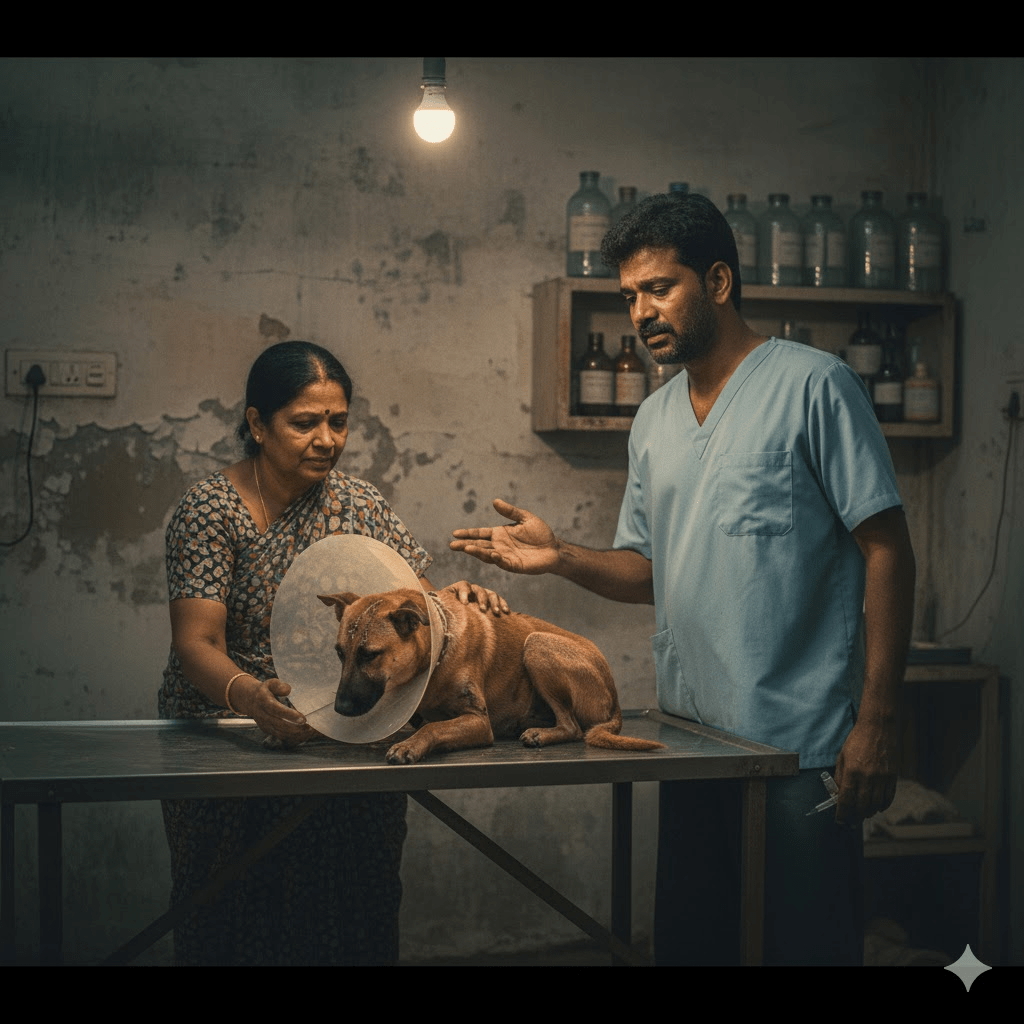In the bustling streets of Panaji, Goa, a quiet revolution of compassion unfolds daily, led by 55-year-old Maria Gomes. Her weathered hands, accustomed to the weight of life’s burdens, now expertly balance 30 kilos of rice and chicken on her bicycle. This isn’t for a family feast, but for an army of over 300 stray dogs, each a testament to life’s harsh realities, yet each known by name and showered with a mother’s unwavering love. Maria’s mission, however, was recently tested by a sight that would break even the strongest hearts: a dog, mangled and near death, a victim of unspeakable cruelty. This wasn’t just another rescue; it was a pivotal moment that would redefine her purpose and ignite a deeper fight for the voiceless. The image captured the dog, later named ‘Hope,’ a poignant symbol of suffering, with stitches crisscrossing its body and a cone of shame around its neck, a testament to the trauma it endured. But even in its brokenness, Maria saw not an end, but a beginning—a chance to mend not just a body, but a spirit.

Finding Hope was an unexpected twist in Maria’s daily routine. Usually, her rounds were a familiar ballet of wagging tails and eager barks, but that evening, a chilling silence led her to a sight of utter devastation. Tucked away in a dark alley, barely breathing, was Hope, her body brutally battered, a stark contrast to the lively strays Maria usually encountered. The initial diagnosis from the local vet was grim: multiple fractures, severe internal bleeding, and infections that threatened to claim what little life remained. The vet, accustomed to such tragic cases, suggested euthanasia as the most humane option. But Maria, looking into Hope’s dull, pain-filled eyes, saw a flicker of will, a desperate plea for a second chance. It was a silent promise made between rescuer and rescued, a pact against the odds.

The road to recovery for Hope was fraught with challenges, both medical and financial. Maria, whose resources were already stretched thin caring for hundreds of dogs, found herself facing exorbitant veterinary bills. She reached out to local animal welfare groups, but their funds were equally strained. Just when despair threatened to overwhelm her, an unexpected ally emerged. A young, tech-savvy volunteer, who had been documenting Maria’s selfless work, started an online crowdfunding campaign, sharing Hope’s heartbreaking story and Maria’s unwavering dedication. The response was astonishing. Donations poured in from around the globe, a testament to the power of shared humanity. This newfound support not only saved Hope but also amplified Maria’s mission, bringing much-needed attention to the plight of street animals in Goa.







